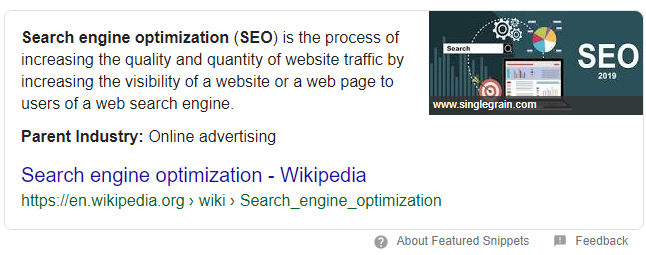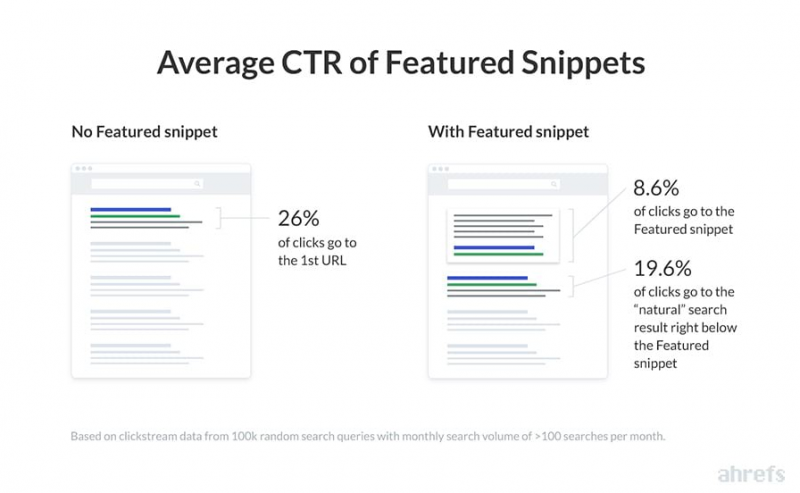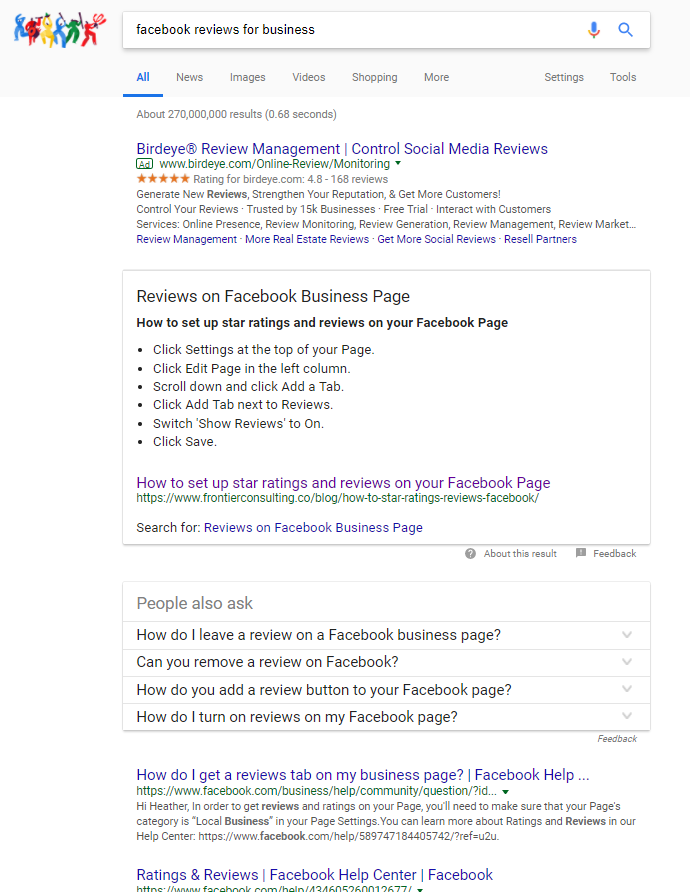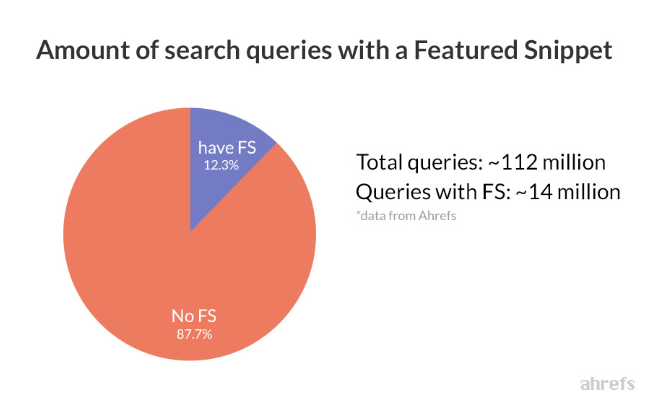Are you still aiming for the #1 ranking in the search engine results page (SERP)? You may be missing out on a massive opportunity that can provide excellent results for your website in several different ways.
I’ll discuss why you should seriously consider including ranking in Position Zero as part of your content marketing strategy.
Position Zero offers a significant organic opportunity for your website. Over time, Position Zero has become more than Google’s experiment. And marketers should start seeing its importance now. This is because Position Zero is quickly becoming the key to long-term search dominance.
What Is Position Zero?
Position Zero is a promoted organic result that Google rolled out five years ago. It is also known as Featured Snippets or Rank Zero.
Featured snippet, as the name suggests, appears as tidbits of information that directly answer a search query. As a “featured” content, it appears on top of the SERPs, even above the coveted Rank 1 position.
Aside from extracted content, Position Zero also shows the display title and the URL of the source web page. Sometimes, it contains an image, a bulleted list, or a simple table.
You most likely encountered Position Zero from searching Google, but here’s an example to illustrate it:

Figure 1 Position Zero
What Makes Position Zero Different?
According to Google, Position Zero is meant to draw out attention on the results page. To do this, they use special boxes where they reverse the format of regular listings.
As shown in Figure 1, the snippet of information describing the search query comes first. In the standard format, the link comes before the snippet, as shown below:

Figure 2 Standard Results Format
Google does this to help users discover what they’re searching for without the need to leave the search results page. This is especially true for people on mobile and those who search by voice.
The Importance of Position Zero
Position Zero dominates today’s searches.
From a searcher’s perspective, featured snippets are a quick and easy way to get answers to queries. This eliminates the trouble of clicking through web pages for answers.
But from a marketer’s standpoint, Position Zero is SEO gold. Here’s why.
- It appears on top of the search results.
Marketers understand the importance of ranking at the top of the SERPs.
Ranking in the top three positions gives your page greater visibility to potential customers. When you have greater visibility, you attract more clicks, leads, and, ultimately, conversion for your business.
What Position Zero does is it appears on top of these coveted rankings. This gives you valuable exposure that beats even the #1 ranking.
- It takes up more space on the SERPs.
Featured snippets occupy more SERP real estate.
These snippets usually feature more information than the standard results format. As a result, it pushes down competitors even more.
The first organic results appear further below, which are shown after the “People also ask” section on the page.
This lets you gain the upper hand over your competition.
- It steals clicks from the #1 ranking result.
In one study conducted by Ahref, they found out that featured snippets steal a significant number of clicks from the #1 rank.

Figure 3 Average CTR of Featured Snippets
Ahref observed that when there is no featured snippet in the search results, the #1 rank gets 26% of clicks on average.
However, when a featured snippet is present, it gets 8.6% of clicks from the supposed #1 rank. The #1 rank below it gets the remaining 19.6% of clicks.
These clicks are crucial for commercial searches.
Featured snippets have become commonplace for commercial queries. One study shows that 9.28% of featured snippets were commercial. Ranking for Position Zero is now more critical than ever if you want to maximize sales opportunities.
- It boosts CTR.
Sure, Position Zero gives you exposure to a wider audience. But since the answer to search queries is already displayed in a featured snippet, won’t it reduce your click-through rate (CTR)?
This is a common concern for marketers, but research has shown the opposite. Instead, Position Zero often boosts CTR.
For instance, HubSpot recorded a whopping 114% increase to their CTR in February 2016. This is after one of their pages moved from #1 rank to Position Zero.
A separate case study published in Search Engine Land shows how one client lost over 39K clicks in two weeks. This is after they lost a featured snippet for a competitive keyword.
These studies suggest that Position Zero plays a role in boosting your CTR.
- It gives higher-quality traffic and a lower bounce rate.
Even if Position Zero does result in fewer clicks, it will still give your website credibility and increased brand recognition.
Since information is immediately available, searchers will know what to expect from your page. They will click through your page because they are interested in the content that is being offered and would like more in-depth information on the topic.
This means higher-quality traffic for you. This may also result in a lower bounce rate.
- It allows smaller sites to compete for ranking positions.
Gone are the days when large companies monopolize the SERPs. With the introduction of featured snippets, even websites from small companies have a chance to achieve a level of content marketing success like never before.
Position Zero lets you rank higher for keywords, say, “Facebook reviews for a business.” And yes, you can appear in snippets even when your competitors are Facebook’s own pages.
Check out the example below:

Figure 4
- It is essential for voice search.
Search habits are changing. And by the end of 2020, voice search is projected to dominate about 50% of online searches.
This means Featured Snippets will now be more critical than ever.
As of 2018, 41% of voice search results came from these snippets. This is based on Backlinko’s findings after an extensive analysis of “voice search ranking factors.”
If you want to benefit from valuable traffic, leads, and conversions, you should start optimizing your content for Position Zero.
- It is becoming more prevalent.
Position Zero is no longer Google’s experiment.
It is here to stay, and it is bound to make significant changes with SEO. In fact, 12% of search results contain featured snippets, according to Search Engine Journal.

Figure 5 Amount of search queries with a Featured Snippet
Position Zero continues to become prevalent and expects that it will continue to be significant in the future.
That’s why you need to keep up with it. Read on to learn how you can rank in Position Zero.
How to Rank for Position Zero
Position Zero is a volatile position. Results can change by the hour, and this means you have a chance to claim a spot—and get kicked out of it.
While the basis for the snippet selection is still unknown, there are surefire ways on how you can increase your chances for Position Zero. And it starts with your content.
- Determine the most “snippable” types of content
Seven types of content dominate Position Zero. Familiarize yourself with each type below.
7 Types of Content You’ll Find in Featured Snippets
Featured snippets answer the who, what, when, where, and why questions.
Your subject matter should be simple enough to define the answer in a short paragraph or list. Then, it should be complex enough to warrant a whole page to unpack.
Look at the “People also ask” box to discover common questions related to your subject.
Instructional or how-tos content are also prime candidates for a featured snippet.
In this type of content, the step-by-step guide offers a great way to trigger clicks from searchers. Because of the valuable content you offer, instructional content also encourages more time-on-page.
How-tos can take different forms, including text, lists, images, and videos.
What’s great about them is that they are not limited to short paragraphs. They offer robust answers that occupy more SERP territory than usual.
Searchers want quick answers when they look for definitions. This makes definition content a likely candidate for featured snippets.
However, don’t stop with just giving definitions for complex terms. Make your web page more valuable with related and useful information.
A rich and detailed content helps improve your engagement rates. And engagement rates may play a role in the selection of featured snippets.
- Frequently asked questions
I don’t mean the usual frequently asked questions (FAQ) page with this. Instead, Position Zero FAQ content revolves around questions that searchers commonly look for in search engines.
This type of content should provide detailed and nuanced answers to the topics in question.
Using a keyword research tool should give you an insight into what searchers are frequently asking online. This lets you craft relevant content to rank using this type of content.
List, bullet points, and tables are all great ways to land the Position Zero. And comparison content makes good use of these formats.
There are also plenty of topics to cover for this type of content. From comparing products, outlining pros and cons, and enumerating differences, you have a chance to rank for Position Zero.
Properly formatting comparison content allows Google to create simplified versions of your list, bullet points, and table. We will discuss how to properly format your content below, so keep on reading.
Searchers want to know what is best. They want to find out the best products, the services—anything that will give them the best experience.
With featured snippets being commonplace for commercial queries, you have to make lists of ‘bests’ in your niche.
Do it right and see your lists of top products appear in Position Zero.
Searchers love to see price breakdowns, which make this type of content ideal for Position Zero.
Price information includes contrasting cost versus features of a particular product or service.
However, prices may vary depending on locations, so it’s best to create estimate tables for searchers.
- Optimize your content
Now that you learned the types of content that dominate Position Zero, it’s time to optimize your content. To do this, you must find keyword candidates for featured snippets.
There are various ways to find said keywords.
- Use keyword and analytics tools
Tools like Moz Keyword Explorer help you find queries formulated as questions. Such questions give you featured snippet opportunities where you can base the content you are making.
Aside from keyword tools, you can also use analytic tools like SEMrush to find featured snippets.
All you need is to run a domain search, click Organic Research, and then click Featured Snippet. This shows which snippets your competitors have ranked for.
- Use Google to find snippet opportunities
A quick Google search using general questions lets you discover topics that searchers look for. Find existing snippets that you can steal from competitors.
You should also check the “People also ask” box for more ideas.
Data mining tools like Answerthepublic.com gives you valuable information on questions searchers are asking online.
Dig deeper to find out which questions return featured snippet results.
Properly marking up your page can help Google understand your content and help with winning Featured Snippet positions.
- Structure and format your content properly
Once you find the keywords and topics to cover, it’s time to create your content.
Featured snippets are all about giving the most direct, clear, and concise answer to queries. That’s why you should pay attention to how you structure and format your content.
Structuring the flow of your content improves your odds for landing the Position Zero. Here’s how you can structure your content on your web page:
- Repeat the question, i.e., the search query.
- Provide a short, direct answer to the query.
- Add more details, including images and data, to fully answer the question.
Formatting your HTML properly can also increase your chance for the featured snippet. Below are some tips on how to format your HTML based on the types of snippets you are targeting.
For paragraphs
- Format the question as a header tag, i.e., H2, H3, H4, and so on.
- Summarize the answer in one paragraph with 40 to 55 words.
- Format the answer in a paragraph HTML tag <p>.
- Place the paragraph directly below the heading.
For numbered lists
- Format the answer in an ordered list using the <ol> tags for how-tos type of content.
For bulleted lists
- Format the answer in an unordered list using the <ul> tags if you think bulleted lists offer the best answer.
For tables
- Format the answer in a table HTML tag <table> instead of using CSS if you are aiming for a table-type snippet.
Final Words
If you want to attract more leads and sales, it pays to spend more time and effort ranking in Position Zero.
Start by learning which types of content Google deems as snippable. Then, optimize content using keywords and topics that searchers look for.
Finally, structure and format your content to improve your chances of landing the Position Zero.
Utilize Position Zero to give your much deserved content a boost above the competition.
Author byline
Steven J Wilson is a Founder and Digital Marketing Consultant helping business owners create & optimize their company’s online presence to acquire more leads and increase revenue. This is accomplished by thoroughly understanding or helping develop the company’s brand message, learning the product or service offerings, and strategically creating an optimized machine through effective Content Creation, Organic and Local SEO, and Advertising.




